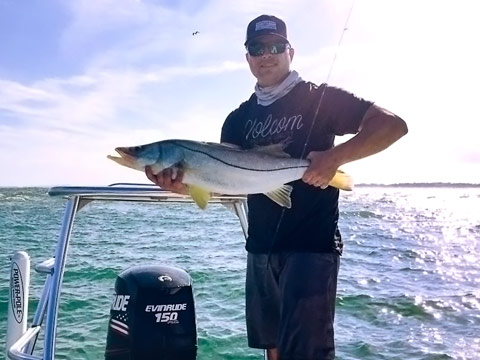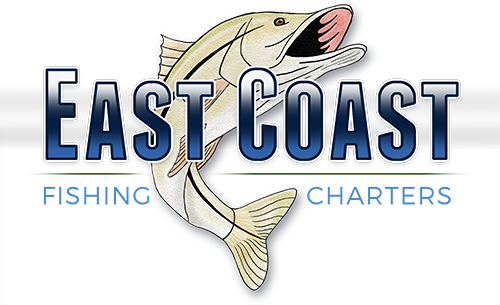East Coast Fishing Charters
Fishing Charters in Melbourne, Melbourne Beach, Sebastian Inlet & Vero Beach
Serving Sebastian Inlet, Vero Beach, Melbourne & Melbourne Beach Fishing Charters
Looking for the best Melbourne Fishing Charters or Melbourne Beach Fishing Charters? Captain Don runs top-rated inshore and nearshore trips across Sebastian Inlet, Vero Beach, and Melbourne — chasing Snook, Redfish, Tarpon, Trout, and more.
Fishing Charter Info
Melbourne Fishing Charters
East Coast Fishing Charters offers top-rated Melbourne fishing charters with inshore, nearshore, and lagoon trips targeting Snook, Redfish, Trout, Tarpon, and more. Leaving from Sebastian Inlet and Melbourne Beach, Captain Don brings years of local experience to every charter. For trip details and pricing, visit our Melbourne charter rates page.
Melbourne Beach Fishing Charters
Our Melbourne Beach fishing charters deliver incredible action along the coastline and Indian River Lagoon. Perfect for families, first-timers, or seasoned anglers looking to hook big game in one of Florida’s best fishing zones. Learn more about our Melbourne Beach inshore trips.

Welcome to East Coast Fishing Charters — where Florida fishing comes alive!
Step aboard and experience the legendary waters of the Indian River Lagoon, home to trophy snook, gator trout, and hard-fighting redfish. Or head to the beautiful Sebastian Inlet, where every sunrise paints the sky and the bite is unforgettable.
With over 30 years of fishing experience — and more than a decade as a full-time guide — our inshore and nearshore charters are unmatched. Whether you're chasing your first tarpon or looking to land a bucket-list snook, we'll make sure your trip is both successful and memorable.
Join us for an adventure that blends local knowledge, top-tier equipment, and the thrill of Florida's best fishing.

Families, first-timers, and experienced anglers alike enjoy exciting days chasing Snook, Redfish, Tarpon, and big Trout across the Indian River Lagoon and the Melbourne Beach coast. This area is famous for its trophy-class fish and year-round action.
Trips can also include nearby hotspots such as Sebastian Inlet and Vero Beach, giving you even more opportunities to target giant Snook, rolling Tarpon, and other Florida favorites when conditions are right.
Discover Melbourne Beach like never before!
Join us for unforgettable Melbourne Beach dolphin tours and private eco adventures designed for small groups of 2–4 guests. Cruise along Florida's beautiful waterways and experience the region's incredible wildlife up close.

Wildlife highlights on our eco tours:
- Dolphins playing in the surf
- Gentle manatees gliding by
- Exotic birds including herons, egrets, ospreys, and even the occasional bald eagle
Why choose our Melbourne Beach eco tours?
- Private, small-group trips for a personal experience
- Quick 1–2 hour cruises — perfect for fitting into your Florida vacation
- Convenient location near Melbourne Beach, Sebastian Inlet, and Indian River Lagoon
The perfect Florida adventure:
Whether you're looking for a peaceful escape or a chance to spot dolphins and manatees, our Melbourne Beach eco tours are the ideal way to connect with nature. Enjoy the beauty of Florida's waterways, then spend the rest of your day exploring the area's beaches, shops, and attractions.

Burial at Sea – Ash Scattering from Sebastian Inlet
At East Coast Fishing Charters, we provide a private and intimate burial at sea service for families wishing to honor their loved ones by scattering ashes in the Atlantic Ocean.
- Private & Personal – limited to up to four guests, ensuring a quiet, meaningful farewell among the closest companions.
- Peaceful Journey – we depart through Sebastian Inlet and travel three miles offshore into the Atlantic, offering a serene setting to fulfill your loved one's final wishes.
- Respectful Experience – the ocean's vast horizon provides a timeless resting place, creating a dignified and comforting moment of remembrance.
Whether you're searching for burial at sea Sebastian Inlet, ash scattering Atlantic Ocean, or private memorial charter Melbourne FL, our service is designed to provide comfort, privacy, and reverence."
Visiting Central Florida? Melbourne and Melbourne Beach are just a short drive from Orlando, Disney, and the Space Coast — making it the perfect fishing adventure for your vacation.
View All Fishing Reports • Melbourne Fishing Charters • Melbourne Beach Fishing Charters
Copyright © 2025 East Coast Fishing Charters
Created by Fencl Web Design










